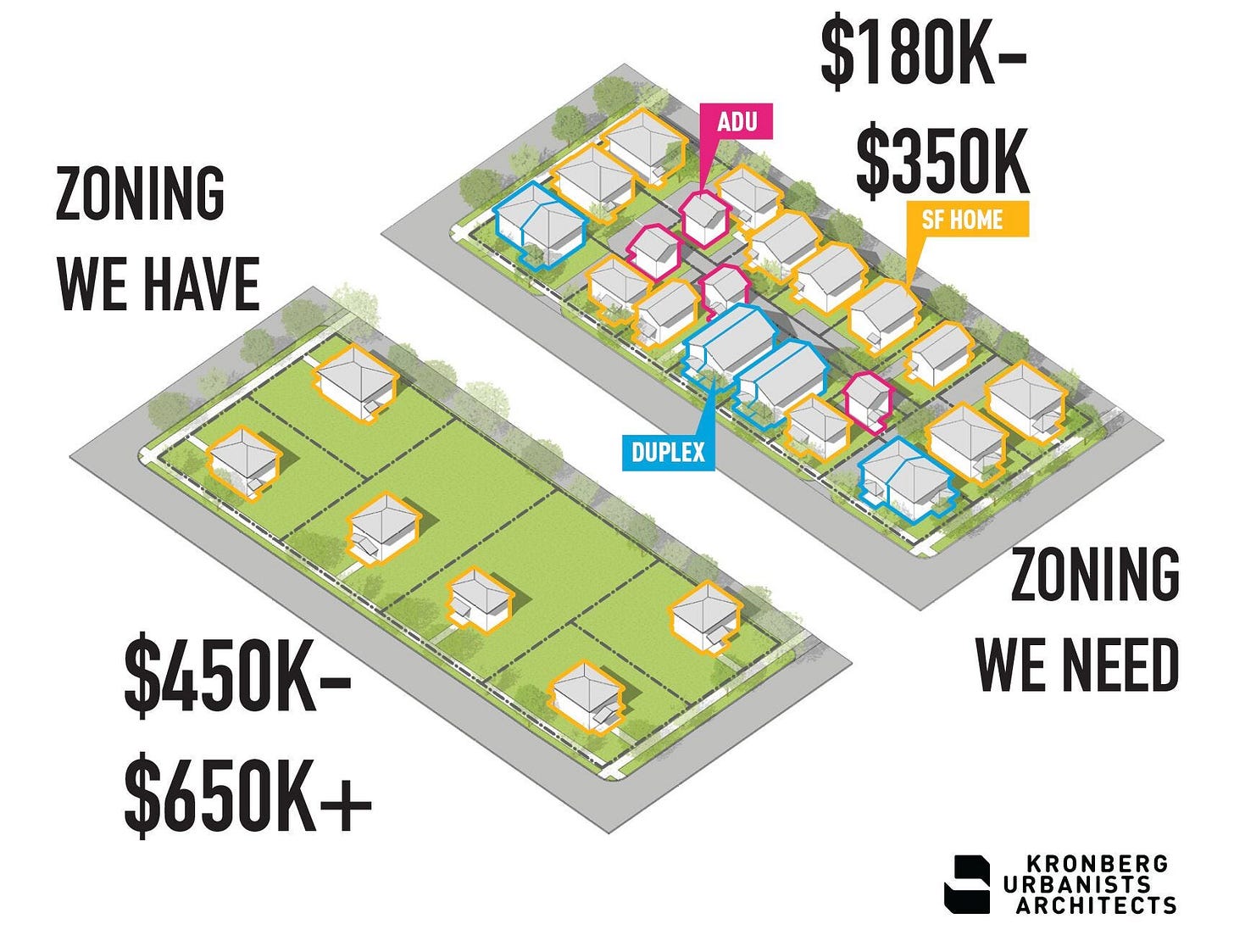Equity is in The Backyard
BEHIND THE MIC SERIES #7 | Architect Eric Kronberg lays out strategies for our lowest-wealth neighbors to provide housing.
In this series, I’ll be reflecting on some of my favorite conversations from Seasons 1 and 2 of The Townbuilder’s Podcast, which I had the pleasure of hosting. Throughout these seasons, I engaged in in-depth conversations with nearly two dozen new town developers and designers. With the podcast set to relaunch in 2025 under the new host Levi Wintz, I wanted to revisit these meaningful episodes, sharing my favorite discussions along with some fresh reflections.
“Do you want to create and build wealth in this country? You've got to help people become landlords.”
Eric Kronberg doesn’t say that as a provocation — he says it as a strategy.
The Atlanta-based architect (and friend of mine) has been quietly flipping the script on housing equity, shifting the conversation away from abstract “affordable housing” and toward ownership, subdivision, and a gentle but radical idea: give people the right to develop their own land.
That starts with code, but it doesn’t end there. In legacy Black neighborhoods like English Avenue, Kronberg sees an opportunity — not just for new housing but for wealth-building. Essentially, the people who got locked out of ownership need to be locked back in.
You build wealth in the smallest increments of being a landlord. We used to talk about being a duplex. Taking even a step further down to a home with the JADU (Junior Accessory Dwelling) or a guest suite, or renting out of bedroom, where having some separation of tenant or occupancy helps make it more [private and] flexible.
And that means unlocking small-scale landlordism. Build a guest suite and rent it out. Carve off a flag lot and sell it to your cousin. Create a new real estate ladder, one that people can actually climb.
THE PROBLEM
But there's a catch. Zoning might let you subdivide — but capital won’t always follow. Banks don’t love weird little units on unconventional lots. Appraisers don’t know what to do with creative housing, especially the types that do not fit into their pre-defined box.
And cities still haven’t figured out how to process things that live between categories. So while form-based code reform is great, it won’t fix equity alone. “We’ve had folks where everything lines up on paper — and they still can’t build because the financing won’t underwrite,” Kronberg says.
…AND SOLUTION
This is where Kronberg’s work gets quietly revolutionary: he’s not just building projects — he’s building regulatory and financial workarounds. He’s in the meetings. He’s talking to civic groups in plain English. He’s drawing the alleys.
And yes — alleys. According to Kronberg, the most overlooked piece of city infrastructure might be its biggest infill opportunity.
Keep reading with a 7-day free trial
Subscribe to onHousing to keep reading this post and get 7 days of free access to the full post archives.




